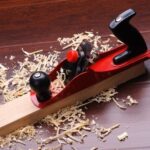Have you ever wondered how to clean old paint from woodwork and restore it to its original beauty? Properly cleaning old paint from woodwork is essential for preserving its natural aesthetic and ensuring a smooth finish for any new paint or varnish. Whether you’re a homeowner looking to refresh the look of your interior woodwork or a DIY enthusiast restoring vintage furniture, understanding the importance of this process is crucial for achieving professional results.
Old paint can detract from the natural beauty of woodwork, creating an uneven surface and affecting the adhesion of new finishes. In this article, we will guide you through the step-by-step process of properly removing old paint from woodwork, providing valuable tips and techniques for achieving outstanding results.
Before diving into the actual cleaning process, it’s important to gather all the necessary tools and materials needed for the job. Additionally, setting up a safe and efficient workspace is crucial for ensuring optimal results and minimizing any potential hazards. By following our comprehensive guide, you’ll be well-equipped to take on this rewarding project and achieve stunning results that will breathe new life into your woodwork.
Tools and Materials Needed for the Job
When it comes to cleaning old paint from woodwork, having the right tools and materials is essential for achieving a successful outcome. Before starting the job, it’s important to gather everything you’ll need to ensure a smooth and efficient process.
One of the most important tools you’ll need is a good quality paint scraper or putty knife. These will help you remove the old paint from the woodwork without causing damage to the surface. Additionally, having sandpaper of varying grits will be necessary for smoothing out any rough areas and preparing the wood for a new finish.
In addition to these tools, you’ll also need a good quality paint stripper to effectively remove multiple layers of old paint. It’s important to choose a product that is safe for use on wood and follow the manufacturer’s instructions carefully.
Other materials that will come in handy include disposable gloves, safety goggles, and a well-ventilated work area. By ensuring you have all of these tools and materials on hand, you can tackle the job with confidence and achieve great results in cleaning old paint from woodwork.
Preparing the Work Area
When it comes to cleaning old paint from woodwork, it’s important to not only focus on the actual removal process but also on preparing the work area. This step is crucial for ensuring a safe and efficient workspace while you tackle the project. By taking the time to set up properly, you can minimize the risk of accidents and make the entire process smoother and more effective.
One of the first things to consider when preparing your work area is ventilation. Whether you’re working indoors or outdoors, it’s important to have proper airflow to prevent inhaling any fumes or dust particles. If you’re working indoors, consider using a fan or opening windows to allow for better air circulation. If you’re working outdoors, choose a well-ventilated area away from direct sunlight.
In addition to ventilation, it’s also essential to protect the surrounding area from potential damage. Lay down drop cloths or plastic sheeting to cover floors and nearby furniture, as well as any other surfaces that could be splattered with old paint or cleaning solutions.
This will not only make clean-up easier but also prevent any accidental damage during the process. Taking these steps may seem like extra work, but they can ultimately save you time and hassle in the long run.
Removing the Old Paint
Now that you have prepared your workspace and gathered all the necessary tools and materials, it’s time to focus on removing the old paint from the woodwork. Depending on the type of paint, the condition of the wood, and your own preferences, there are several different methods and techniques you can use to accomplish this task. Here are some step-by-step instructions for each method:
- Sanding: One of the most common methods for removing old paint from woodwork is sanding. Using sandpaper or a power sander, gently sand away the old paint until you reach the bare wood. Start with a coarse grit sandpaper and gradually work your way to a finer grit for a smooth finish.
- Chemical Strippers: Another option for removing old paint is using chemical strippers. Apply the stripper to the painted surface according to the manufacturer’s instructions. Once the paint begins to bubble and lift, use a scraper or wire brush to remove it from the woodwork.
- Heat Gun: A heat gun can also be used to soften and remove old paint from woodwork. Hold the heat gun a few inches away from the painted surface and move it back and forth until the paint starts to bubble. Use a scraper or putty knife to gently lift off the softened paint.
No matter which method you choose, be sure to wear protective gear such as gloves, goggles, and a mask to safeguard yourself from any potentially harmful fumes or particles.
Remember that patience is key when removing old paint from woodwork. Take your time and work carefully to avoid damaging the wood beneath the paint. And always follow proper safety precautions when using tools and chemicals in this process.
By following these step-by-step instructions for different methods and techniques, you can effectively clean old paint from woodwork without causing damage or creating unnecessary mess.
Cleaning the Woodwork Surface
Scraping and Sanding
One of the most effective methods for cleaning old paint from woodwork is scraping and sanding. Use a paint scraper to gently remove any remaining paint from the surface, being careful not to gouge or damage the wood. Once the majority of the paint has been removed, use sandpaper to smooth out any remaining rough spots and ensure that the surface is even.
Chemical Stripping
For stubborn or hard-to-reach areas, chemical stripping can be an effective method for removing old paint from woodwork. Apply a commercial paint stripper according to the manufacturer’s instructions and allow it to penetrate the layers of old paint. Once softened, use a scraper to remove the loosened paint, then follow up with sanding to smooth out the surface.
Cleaning Solutions
After removing old paint, it’s important to thoroughly clean the woodwork surface. Use a mild detergent solution and a clean cloth to wipe down the entire area, removing any dust, debris, or residue left behind by the stripping process. Ensure that the surface is completely dry before proceeding with any repairs or refinishing.
By employing these techniques, you can ensure that your woodwork surface is clean and smooth, ready for any necessary repairs or refinishing. Regular maintenance and care will help preserve its beauty for years to come.
Repairing Any Damaged Areas
When dealing with old paint on woodwork, it’s not uncommon to encounter dents, scratches, or other imperfections that need to be addressed before moving forward with the cleaning process. It’s essential to repair these damaged areas to ensure a smooth and flawless finish once the old paint is removed. Here are some tips for effectively addressing any dents, scratches, or imperfections in your woodwork.
First and foremost, assess the extent of the damage and determine whether it can be repaired or if it requires professional help. Minor scratches can often be fixed with wood fillers or putty, while deeper dents may need more extensive repairs. Use sandpaper to smooth out any rough edges around the damaged area before applying any filler or putty. Once the damaged area has been properly prepared, apply the appropriate filler according to the manufacturer’s instructions.
For more significant imperfections such as deep scratches or gouges, consider using wood glue along with sawdust from the same type of wood to create a custom filler that matches the color and grain of your woodwork. This method can result in a seamless repair that blends in with the surrounding wood once painted over.
It’s important to allow ample time for any fillers or putty used to dry completely before proceeding with the next steps of cleaning old paint from your woodwork. Taking your time to properly address these damaged areas will ensure a professional-looking finish that will enhance the overall appearance of your woodwork once it is clean and repainted.
| Tip | Description |
|---|---|
| Assess Damage | Determine extent of damage before beginning repairs |
| Wood Glue and Sawdust | Create custom filler using wood glue and sawdust for seamless repair |
| Drying Time | Allow ample time for fillers/putty to dry completely before moving on |
Finishing Touches
Woodwork can easily become worn down and damaged over time, especially if it is not properly maintained. One of the most important steps in preserving the beauty and integrity of woodwork is adding a protective coat or finish. This not only enhances the appearance of the wood but also provides a layer of protection from future damage. Below are some essential tips to consider when adding a protective coat or finish to your woodwork:
- Choose the right product: There are various types of protective finishes available, including varnish, shellac, lacquer, and polyurethane. Consider the specific needs of your woodwork and select a product that best suits those needs.
- Preparation is key: Before applying any protective coating, ensure that the wood surface is clean and smooth. Sanding can help to remove any imperfections and create an even surface for the finish to adhere to.
- Applying the finish: Use a high-quality brush or applicator to evenly apply the protective coat. Follow the manufacturer’s instructions for drying times and additional coats as needed.
It is important to note that adding a protective coat or finish is not only about enhancing the appearance of woodwork but also about preserving its quality and longevity. By following these tips, you can ensure that your woodwork remains well-protected and looking beautiful for years to come.
Remember that proper maintenance and care are essential for preserving the beauty of woodwork. Regular cleaning, checking for signs of wear, and addressing any issues promptly can help prolong its lifespan and keep it looking like new.
Maintenance and Care
Maintaining and caring for woodwork is essential to keep it looking like new for years to come. Proper maintenance ensures the longevity and beauty of your woodwork, making it an important aspect of home improvement. Here are some tips for keeping your woodwork in top condition.
Regular Cleaning
One of the most important ways to maintain woodwork is by regularly cleaning it. Dust, dirt, and grime can build up over time, potentially damaging the surface. Use a soft cloth or a vacuum cleaner with a brush attachment to remove dust and dirt from the surface. For stubborn stains, use a mild wood cleaner and follow the manufacturer’s instructions. Avoid using harsh chemicals as they can damage the finish of the wood.
Protective Coating
To prevent damage to the woodwork, consider applying a protective coating such as varnish, lacquer, or wax. This not only adds shine but also acts as a barrier against moisture, scratches, and UV rays. Before applying any protective coating, make sure the surface is clean and free from any old paint residue or dust.
Regular Inspections
Make it a point to inspect your woodwork regularly for any signs of damage such as dents, scratches, or peeling paint. Address these issues immediately to prevent further damage and maintain the overall appearance of the woodwork.
By following these maintenance tips, you can ensure that your woodwork looks like new for many years to come. Regular cleaning, applying protective coatings, and addressing any damages promptly are all essential practices in maintaining the beauty of your woodwork.
Conclusion
In conclusion, properly cleaning old paint from woodwork is essential for preserving the beauty and longevity of the wood. By following the outlined steps and using the right tools and materials, you can effectively remove old paint and restore the natural beauty of your woodwork. Remember to always prioritize safety when preparing the work area, and be sure to follow proper techniques for removing old paint and cleaning the woodwork surface.
It’s important to note that addressing any damaged areas, such as dents or scratches, during the cleaning process is crucial for maintaining the overall appearance of your woodwork. By taking the time to repair these imperfections and adding a protective coat or finish, you can ensure that your woodwork remains in top condition for years to come.
Proper maintenance and care are also key factors in preserving the beauty of woodwork. By regularly cleaning and protecting your woodwork, you can prevent future damage and keep it looking like new. Following these steps will not only enhance the appearance of your woodwork but also contribute to its longevity. Next time you wonder how to clean old paint from woodwork, remember that with proper care, you can maintain its beauty for years to come.
Frequently Asked Questions
What Is the Best Way to Remove Old Paint From Wood Trim?
The best way to remove old paint from wood trim is to use a chemical paint stripper or heat gun. These methods help soften the paint so it can be easily scraped off without damaging the wood underneath.
How Do You Remove Dried Paint From Wood Without Damaging Finish?
To remove dried paint from wood without damaging the finish, you can try using a gentle solvent like denatured alcohol or mineral spirits. Apply the solvent to a cloth and gently rub the affected area until the paint softens and can be removed without harming the wood.
What Is the Easiest Way to Remove Old Paint?
The easiest way to remove old paint is by using a chemical paint stripper or a pressure washer. Both methods help break down the old paint, making it easier to scrape or wash away. However, it’s important to take safety precautions when using these methods and to follow the manufacturer’s instructions carefully.

Hi everyone! I’m a woodworker and blogger, and this is my woodworking blog. In my blog, I share tips and tricks for woodworkers of all skill levels, as well as project ideas that you can try yourself.





